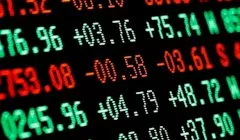Resources
How investors can trade to generate extra income
Promoted by City Index.
Rarely has the financial markets landscape been as challenging as it is today, for investors to generate returns and passive income.
How investors can trade to generate extra income
Promoted by City Index.
Rarely has the financial markets landscape been as challenging as it is today, for investors to generate returns and passive income.

At the recent Reserve Bank of Australia (RBA) meeting in July, the RBA kept interest rates steady at 1.5%,for the 23rd month in a row. The RBA is not expected to raise interest rates until at least late 2019. Although some economists remain reluctant to rule out the next move in interest rates being lower.
In the decade prior to the Global Financial Crisis interest rates sat mostly between 5.0% and 7.5% and helped many Australians fund their retirement. This remains a fading memory that unfortunately for investors is unlikely to return anytime soon.
The low-interest rate environment has encouraged investors to look further afield for capital gains and dividend yield. Two of the beneficiaries of this have been the Australian property market and Australian bank shares.
With their fortunes entwined, its perhaps not surprising to see both property prices and bank share prices cooling at the same time, presenting another set of challenges to investor portfolios. After eight consecutive months of falling home prices, expert commentators agree that housing prices, particularly in Sydney and Melbourne, are likely to continue to fall for the remainder of 2019 and into 2020.

Then, of course, there are geopolitical factors to consider including U.S. and China trade tensions, political uncertainty in the European Union involving Italy, Spain and Germany, rising crude oil prices, Brexit and Emerging Market wobbles to name just a few.The result of this environment has been increased interest in trading to generate extra income.
While the terms investing, and trading are often used interchangeably, they do have very different meanings. Investing is the process of building a portfolio of assets that may include stocks, bonds, commodities, properties etc with the view to holding them for an extended period. Short-term price fluctuations of the market are ignored based on the expectation for prices to continue higher in the long term, with interest, dividends cushioning declines and adding to overall returns.
Trading, on the other hand, aims to take advantage of the short-term price fluctuations that are mostly ignored by the investment community. As a trader,the aim is to buy a security at a lower price and then to sell it at a higher price. Trading also enables profits to be made in falling markets, by short selling which involves selling at a higher price and buying back at a lower price.
There are several types of trading styles that determine how long a trade is held for including day trading, swing trading, and position trading. Regardless of style, traders are looking to enter and exit positions over a shorter time frame, taking smaller, more frequent trades.
While this sounds easy to do, trading like any worthwhile pursuit requires a certain level of dedication, understanding, and persistence to become consistently good at. Confusing the picture as to where to start, there are many “learn to trade” companies offering expensive trading courses without offering a positive track record to even remotely justify the cost.
Trading decisions usually come from one of two types of analysis. Fundamental Analysis and Technical Analysis. Without perhaps realising it, many investors may already have a pretty good understanding of Fundamental Analysis.
Fundamental Analysis is the ability to interpret how economic news, events, economic and financial data affects financial markets. Examples of this include economic releases such as GDP, CPI, employment data, retail sales and,interest rate movements. At a stock level, it is the analysis of financials including earnings, future growth, dividend yield, debt levels and profit margins. Fundamental Analysis also includes an understanding of how global events such as wars, trade wars, natural disasters, missile tests and, elections can affect markets.
In part II of this series, we will step further into world of trading and discuss Technical Analysis and what I consider the most essential element of trading which is Risk Management Techniques and Strategies.
Source Tradingview. The figures stated are as of the 11h of July 2018. Past performance is not a reliable indicator of future performance. This report does not contain and is not to be taken as containing any financial product advice or financial product recommendation
TECH-FX TRADING PTY LTD (ACN 617797645) is an Authorised Representative (001255203) of JB Alpha Ltd (ABN 76 131 376 415) which holds an Australian Financial Services Licence (AFSL no. 327075)
Trading foreign exchange, futures and CFDs on margin carries a high level of risk and may not be suitable for all investors. The high degree of leverage can work against you as well as for you. Before deciding to invest in foreign exchange, futures or CFDs you should carefully consider your investment objectives, level of experience, and risk appetite. The possibility exists that you could sustain a loss in excess of your deposited funds and therefore you should not invest money that you cannot afford to lose. You should be aware of all the risks associated with foreign exchange, futures and CFD trading, and seek advice from an independent financial advisor if you have any doubts. It is important to note that past performance is not a reliable indicator of future performance.
Any advice provided is general advice only. It is important to note that:
- The advice has been prepared without taking into account the client’s objectives, financial situation or needs.
- The client should therefore consider the appropriateness of the advice, in light of their own objectives, financial situation or needs, before following the advice.
- If the advice relates to the acquisition or possible acquisition of a particular financial product, the client should obtain a copy of, and consider, the PDS for that product before making any decision.

Sponsored features
Dissecting the Complexities of Cash Indices Regulations: An In-Depth Analysis
Introduction In recent years, the world of finance has seen a surge of interest in cash indices trading as investors seek potential returns in various markets. This development has brought increased ...Read more

Sponsored features
The Best Ways to Find the Right Trading Platform
Promoted by Animus Webs Read more

Sponsored features
How the increase in SMSF members benefits business owners
Promoted by ThinkTank Read more

Sponsored features
Thinktank’s evolution in residential lending and inaugural RMBS transaction
Promoted by Thinktank When Thinktank, a specialist commercial and residential property lender, recently closed its first residential mortgage-backed securitisation (RMBS) issue for $500 million, it ...Read more

Sponsored features
Investors tap into cyber space to grow their wealth
Promoted by Citi Group Combined, our daily spending adds up to opportunities for investors on a global scale. Read more

Sponsored features
Ecommerce boom as world adjusts to pandemic driven trends
Promoted by Citi Group COVID-19 has accelerated the use of technologies that help keep us connected, creating a virtual supply chain and expanded digital universe for investors. Read more

Sponsored features
Industrial property – the silver lining in the retail cloud
Promoted by ThinkTank Read more

Sponsored features
Why the non-bank sector appeals to SMSFs
Promoted by Think Tank Read more

Sponsored features
Dissecting the Complexities of Cash Indices Regulations: An In-Depth Analysis
Introduction In recent years, the world of finance has seen a surge of interest in cash indices trading as investors seek potential returns in various markets. This development has brought increased ...Read more

Sponsored features
The Best Ways to Find the Right Trading Platform
Promoted by Animus Webs Read more

Sponsored features
How the increase in SMSF members benefits business owners
Promoted by ThinkTank Read more

Sponsored features
Thinktank’s evolution in residential lending and inaugural RMBS transaction
Promoted by Thinktank When Thinktank, a specialist commercial and residential property lender, recently closed its first residential mortgage-backed securitisation (RMBS) issue for $500 million, it ...Read more

Sponsored features
Investors tap into cyber space to grow their wealth
Promoted by Citi Group Combined, our daily spending adds up to opportunities for investors on a global scale. Read more

Sponsored features
Ecommerce boom as world adjusts to pandemic driven trends
Promoted by Citi Group COVID-19 has accelerated the use of technologies that help keep us connected, creating a virtual supply chain and expanded digital universe for investors. Read more

Sponsored features
Industrial property – the silver lining in the retail cloud
Promoted by ThinkTank Read more

Sponsored features
Why the non-bank sector appeals to SMSFs
Promoted by Think Tank Read more











